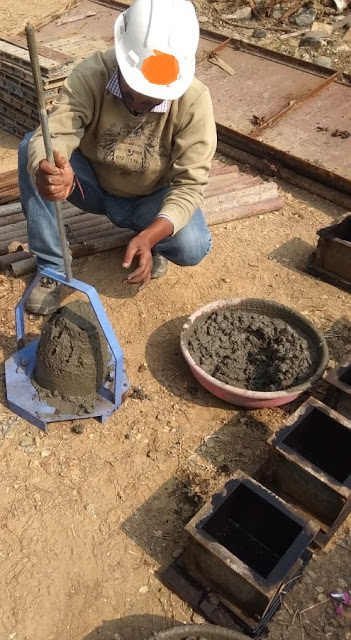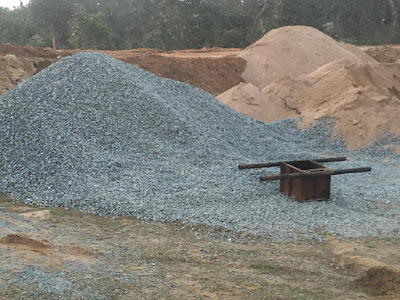testing
February 03, 2019
SLUMP TEST OF CONCRETE | HOW TO DO SLUMP TEST OF CONCRETE AT SITE
SLUMP TEST OF CONCRETE | HOW TO DO SLUMP TEST OF CONCRETE AT SITE
OBJECTIVE:
This method of test specifies the procedure to be adopted, either in the laboratory or in the field during work, for determining the workability of concrete where the nominal maximum size of aggregate does not exceed 38 mm.
APPARATUS:
Metal slump cone of at least 1.6mm thickness provided with a suitable base plate and also handles for lifting it from the moulded concrete test specimen vertically
Internal dimension of the cone should have the following sizes:
Bottom diameter - 20 cm
Top diameter - 10 cm
Height - 30 cm
Tamping rod of 16 mm diameter 0.6m long and rounded at one end.
PROCEDURE:
1. Firstly decide the frequency of slump value to be taken during concreting.
2. Oil the interior surface of the slump cone with a mould releasing oil to prevent adhesion of the concrete.
3. Place the slump cone on a levelled surface.
4. Collect the sample thoroughly in a wheelbarrow with sampling scoop.
5. Remix the sample thoroughly in a wheelbarrow with sampling scoop.
6. After remixing immediately fill the slump cone in layers approximately one- quarter of the height of the cone.
7. Each layer shall be compacted with the tamping rod by 25 strokes distributed in a uniform manner over the cross-section of the cone and for the second and subsequent layers tamping rod shall penetrate into the underlying layer.
8. After compacting the top layer, the concrete shall be struck off level the top of the slump cone, using a trowel. Any mortar, which may have leaked out between the mould and the base plate, shall be cleaned away.
9. Unscrew the slump cone from the base plate and remove it immediately from the concrete by raising it slowly and carefully in a vertical direction.
10. After the concrete subsides place the slump cone on the plate in a reverse position and places a scale on it. Measure the height between the top of the mould and the highest point of the specimen being tested.
REPORTING OF SLUMP VALUE:
The slump measured shall be reported in terms of a millimetre of subsidence of the specimen during the test. Any slump specimen, which collapses or shears off laterally, shall be repeated with another sample. If in the repeat test also, the specimen shears the slump shall be measured and the fact the specimen sheared shall be reported. Take corrective action to make the mix cohesive.
















